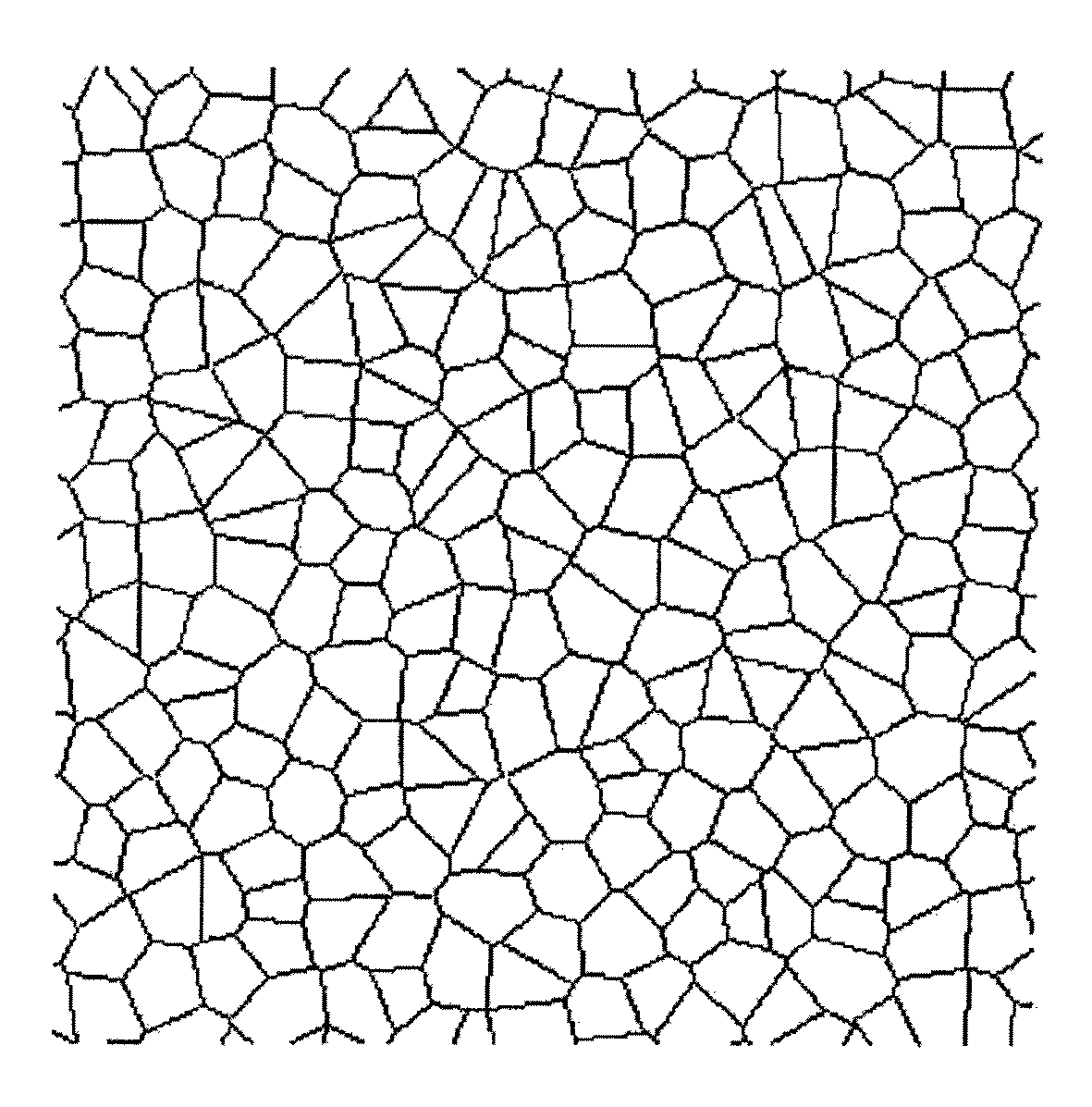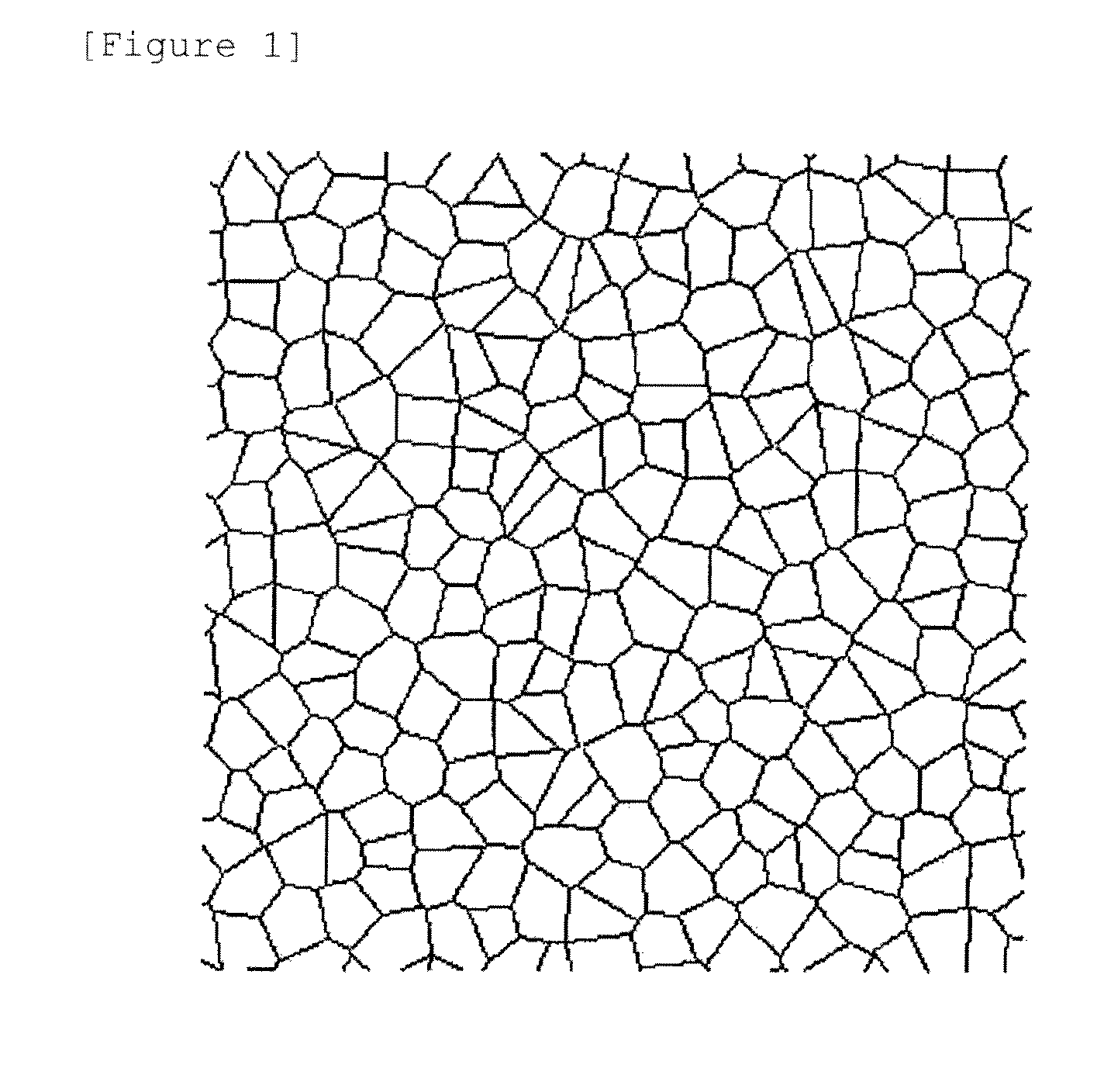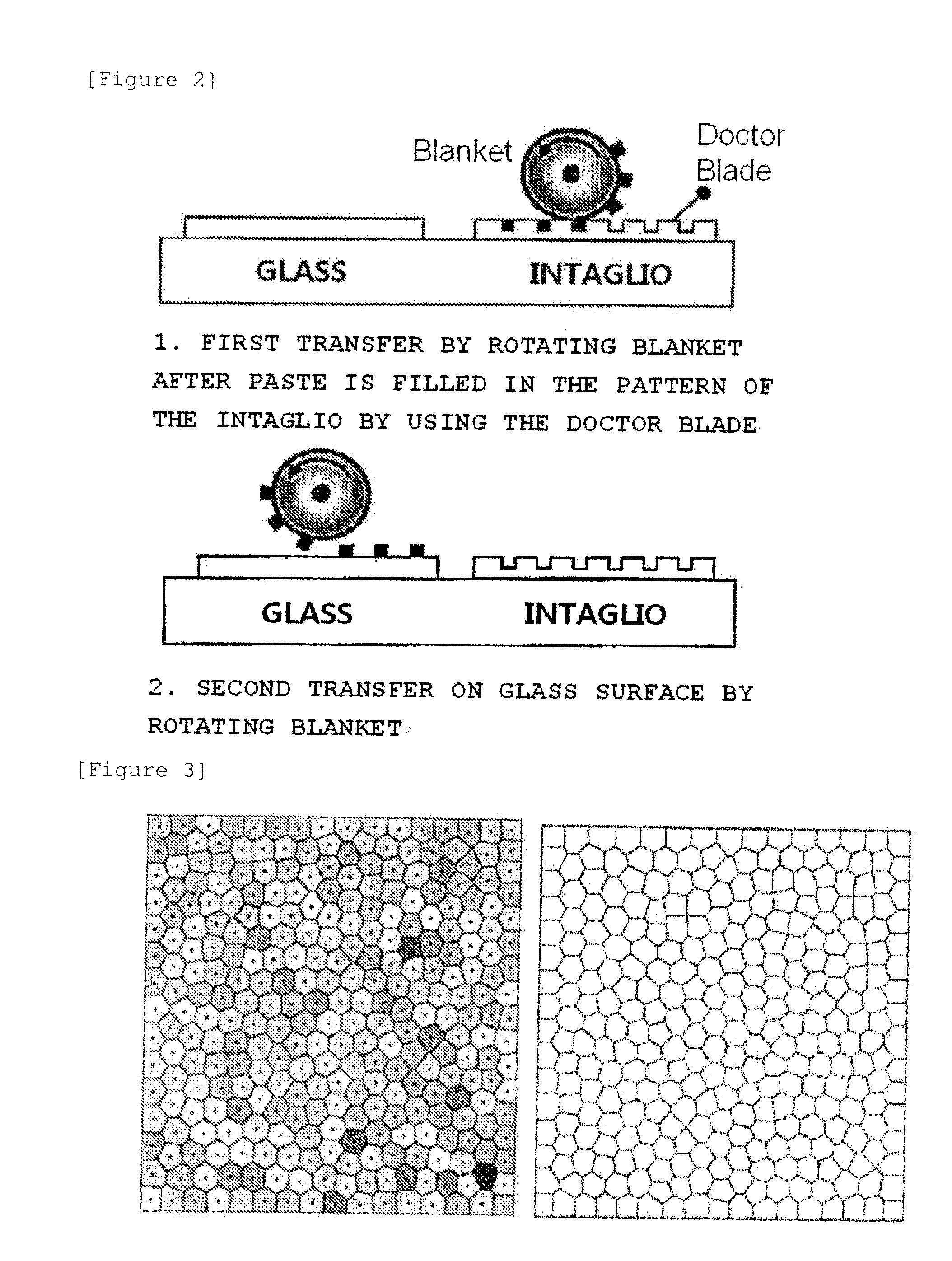Heating element and manufacturing method thereof
a technology of heating element and manufacturing method, which is applied in the direction of vehicle maintenance, vehicle cleaning, transportation and packaging, etc., can solve the problems of difficult to drive it at a low voltage of 40 v or less, and achieve excellent heating performance, low voltage, and minimal side effects.
- Summary
- Abstract
- Description
- Claims
- Application Information
AI Technical Summary
Benefits of technology
Problems solved by technology
Method used
Image
Examples
example 1
[0084]The silver paste was manufactured by dissolving 80 wt % of silver particles that had the particle diameter of 2 micrometers, 5 wt % of polyester resin, 5 wt % of grass frit in 10 wt % of RCA (butyl carbitol acetate) solvent. As the intaglio, the glass that had the width of 20 micrometers, the depth of 7.5 micrometers and the Voronoi pattern was used. The Voronoi pattern that was the same as that of FIG. 1 was manufactured by setting the square of 0.09 mm2 as the basic unit and providing irregularity to the distribution of dots in the basic unit. The ratio of the area distribution of the closed figure of the pattern was 23%.
[0085]After the silver pattern was formed on the glass substrate (100 mm×100 mm) by using the method that was shown in FIG. 2 and the offset printer, it was sintered at 600° C. for about 3 min to form the pattern shown in FIG. 1. The surface resistance of the glass substrate was 0.6 ohm / square, and the bus bar was formed by contacting the copper strip on the...
example 2
[0087]The silver paste was manufactured by dissolving 80 wt % of silver particles that had the particle diameter of 2 micrometers, 5 wt % of polyester resin, 5 wt % of grass frit in 10 wt % of BCA (butyl carbitol acetate) solvent. As the intaglio, the glass that had the width of 20 micrometers, the depth of 10 micrometers and the Delaunay pattern was used. The Delaunay pattern as shown in FIG. 8 was manufactured after being formed by making the distribution of dots in the basic unit 0.09 mm2 irregular. The ratio of the area distribution of the closed figure of the pattern was 20%.
[0088]After the silver pattern was formed on the glass substrate (100 mm×100 mm) by using the method that was shown in FIG. 2 and the offset printer, it was sintered at 600° C. for about 3 min to form the pattern shown in FIG. 8. The surface resistance of the glass substrate was 1.0 ohm / square, and the bus bar was formed by contacting the copper strip on the pattern by the clip in the direction of 100 mm. I...
example 3
[0089]The same method as Example 1 was performed, except that only the basic unit was changed into 0.25 mm2. In this case, the used pattern was the same as FIG. 9. The ratio of the area distribution of the closed figure of the pattern was 20%. In this case, the surface resistance was 1.2 ohm / square, and resistance between both ends of the glass substrate of 100 mm×100 mm was 1.5 ohm. The visible ray permeability of the glass that had the conductive heating line pattern was 83%. In this case, the standard deviation value of the intensity of light for each angle was 1.4. In addition, predetermined patterns by scattering of light were not observed around the light source.
PUM
| Property | Measurement | Unit |
|---|---|---|
| Length | aaaaa | aaaaa |
| Fraction | aaaaa | aaaaa |
| Fraction | aaaaa | aaaaa |
Abstract
Description
Claims
Application Information
 Login to View More
Login to View More - R&D
- Intellectual Property
- Life Sciences
- Materials
- Tech Scout
- Unparalleled Data Quality
- Higher Quality Content
- 60% Fewer Hallucinations
Browse by: Latest US Patents, China's latest patents, Technical Efficacy Thesaurus, Application Domain, Technology Topic, Popular Technical Reports.
© 2025 PatSnap. All rights reserved.Legal|Privacy policy|Modern Slavery Act Transparency Statement|Sitemap|About US| Contact US: help@patsnap.com



